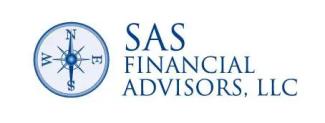
"This time it's different"
Back to the yield curve. The severe inversion during the last year and a half is reversing. The yield curve is still inverted but it is becoming less steep. The 10-year yield closed at 4.73% up from 3.79% a year ago and the same rate on January 1, 2023. Intermediate and long-term rates are higher across the board. Short term rates are higher across the yield curve as well but the increase in intermediate and long-term rates is more significant because the inverted yield curve steepness is shrinking. This is a reflection of the Fed’s statements in regard to keeping rates higher for longer and the growing cost of budget deficits. The Fed tough talk is making investors nervous. Over the last two months, the increase in interest rates is part of the reason stock prices have declined. At the same time, there is evidence of an economic slowdown. Credit card debt is growing as are delinquent payments. 30-year mortgage rates could exceed 8% shortly. The first half of the year consumers were the primary driver of GDP growth over 2%. Employment remains consistently strong as well. No recession has occurred in modern times without an inverted yield curve and inverted yield curves have been a good predictor of recessions.
“This time it is different” is an expression that raises red flags for me because the business cycle is pretty consistent for long periods of time. That rule would say that although a recession has not happened yet, it still could. There is certainly less talk of a recession among analysts and economists, but they are only correct half the time. One possible explanation is concern about political crises such as government shutdown happening at the same time that deficits are rising and because of high interest rates the cost of those deficits is much higher than when the US Treasury paid very low interest rates on debt. Now that the cost of debt is growing exponentially because of the higher interest rates, the market response is to increase interest rates in intermediate and long rates whereas up until the last two months the increase in interest rates was primarily in short maturities. Higher interest rates and the expectation they will go higher even though inflation is dropping, historical valuation of stocks is very expensive. As mentioned before the equity risk premium has shrunk to historically low levels pointing investors to bonds for their low risk and away from stocks.
We have improved our billing system. We are now utilizing Morningstar for billing and will be sending client invoices to each client's Morningstar portal rather than by email. If you have not set up your client portal yet please use our link or contact us at info@sasadvisors.com for further assistance.
This will have no impact or change on fee calculations or the fee themselves. Each account with $10,000 will assume its own fee except in some circumstances. of $10,000 will assume its own fee (under 10k will have no fee). Newly opened accounts will be prorated for the appropriate partial quarter.
This website is informational only and does not constitute investment advice or a solicitation. Investments and investment strategies recommended in this blog may not be suitable for all investors. SAS Financial Advisors, LLC and its members may hold positions in the securities mentioned within this newsletter. SAS Financial Advisors, LLC is not responsible for any third-party content referenced.
The SAS Newsletters are posted on the SAS Blog weekly: https://www.sasadvisors.com/blog

